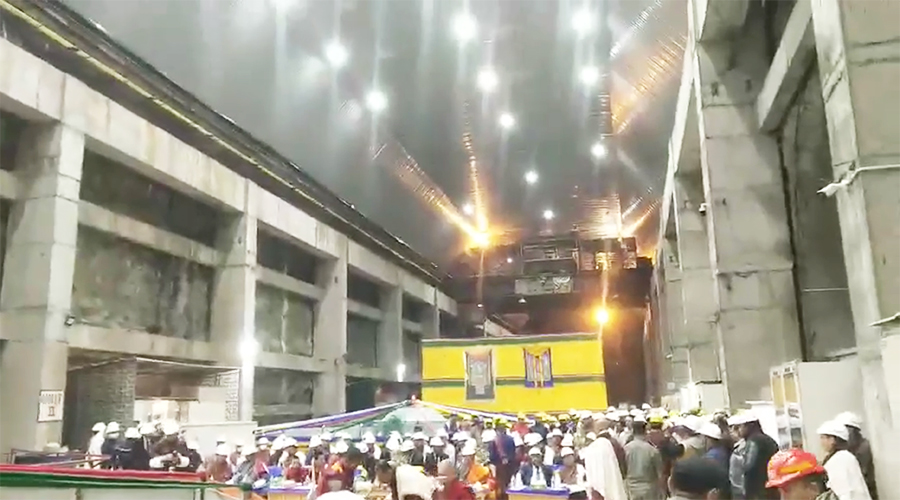
The Punatsangchu-II Hydroelectric Project has synchronised two units and integrated it with the national grid now. This means the two units have now transitioned from the construction phase to the power generation phase. The opening ceremony was held today coinciding with the 117th National Day.
Energy and Natural Resources Minister Gem Tshering graced the opening event today inside the PHPA-II powerhouse. Government officials along with project employees were also present at the event.
Although the two units began to generate electricity and are connected to the national grid, another four units are still under construction.
The testing and commissioning of the turbines of the two units began in August this year but had to be suspended due to water seepage in the powerhouse.
However, the rectification works have been completed and the units have begun to generate electricity.
Each unit will generate 170 megawatt of electricity.
Gem Tshering, Minister for Energy and Natural Resources said “now today, we are saying that of the six units, we have synchronised two units. Now when we are importing 1,100 megawatt, from tomorrow itself we can subtract 340 megawatt from 1,100 megawatt. So, it will help a lot.”
According to the minister, the remaining units are expected to commission by next year.
Once the entire project is fully commissioned, the surplus electricity will be sold to India. Negotiations on the tariff are still under discussion.
Minister for Energy and Natural Resources said “From the four units, one unit will be completed sometime in February next year. We are planning to commission all four units by June next year and if possible by March.”
So far, almost 97 per cent of the overall works of the project is completed.
The governments of Bhutan and India had begun the project in 2010 with an initial estimated cost of more than Nu 37bn.
The project was initially planned to be completed by 2017.
However, due to landslide inside the powerhouse in 2016 and due to the pandemic, the completion deadline got delayed several times.
Officials said the project is now estimated to cost more than 94 billion ngultrum.
Changa Dorji, Wangdue Phodrang
Edited by Tshering Zam







